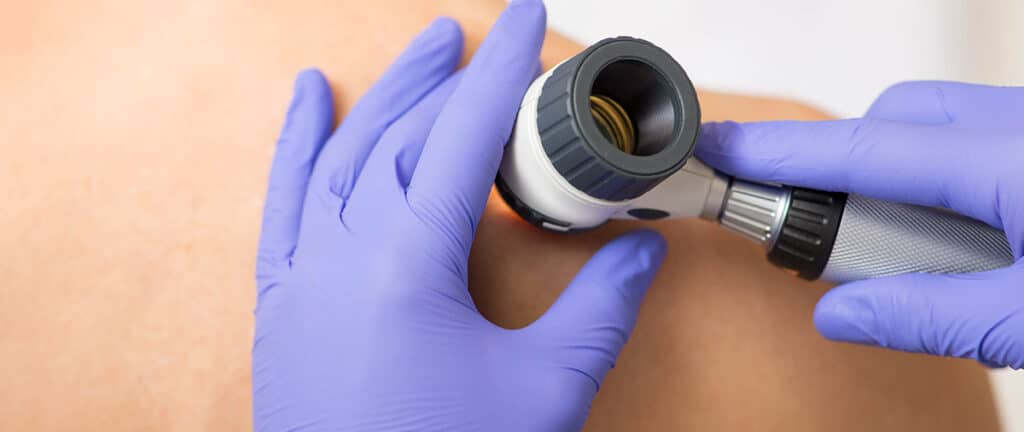
Perhaps more than any other medical specialty, dermatology focuses on individualized patient treatment. Every patient needs a personalized treatment plan tailored to the patient’s condition, lifestyle, and goals. Moreover, not every dermatologist enjoys performing every type of procedure.
To succeed, dermatologists need a unique form of practice management, one that fully supports both patient and provider preferences. They also need systems aimed at bringing in new patients, stabilizing revenue, and recruiting and retaining staff. On the technology side, they need a high level of support for scheduling, image and lab integration, coding, prior authorization, and CMS’s Merit-based Incentive Payment System (MIPS).
Treatment plans and prior authorization
At the heart of your practice is the freedom to create a plan for each patient’s unique circumstance. “Having the ability to individualize a patient’s treatment plan for their specific needs helps dermatologists create the best outcome and recovery for them,” writes Dr. Jeremy Youse, founding partner, medical director, and practicing dermatologist at VitalSkin Dermatology, in Dermatology Times.
The corollary is, of course, your ability to navigate the complexities of prior authorizations. Fortunately, today’s advanced billing software can turn a fairly manual process into one that’s completely electronic; some can even assist with the process.
Image and lab integration
Data must flow electronically between your office and every imaging center and pathology lab you use. This eliminates manual systems rife with human error and delays. Ideally, your software should allow you to use Health Language 7 (HL7) to submit orders electronically and receive results the same way. Your wait time for results will be shorter, the number of follow-up calls you make will be fewer, and your patients will be pleased not to have to wait days for news about their condition.
Coding support
The number of conditions and variability of procedures involved makes dermatology coding highly complex. One helpful resource for coding changes and best practices is the American Academy of Dermatology’s Coding Resource Center. Additionally, look for billing software that automatically validates codes as they’re entered, increasing clean claims and reducing denials.
Along the same lines, advanced software helps your billing department take advantage of CMS’s MIPS program. Providers or groups that score above a certain amount of MIPS points avoid negative payment adjustments on covered professional services submitted to Medicare in future years—with bonuses awarded to individuals or groups that achieve a high score (usually 85 points or higher).
HR and Marketing
All businesses are suffering from staff shortages, but Forbes notes that healthcare has lost about 20% of its workforce, including 30% of nurses. One hiring suggestion is to adopt a “richer consultative interview process,” which involves framing interview questions on the fundamental job components (as opposed to asking general questions to uncover personality traits and transferable skills). When it comes to retention, experts say the most important factor is whether or not clinicians feel they make a difference in patients’ lives every day.
On the marketing front, experts advocate for a comprehensive approach that combines text with colors, shapes, and other types of nonverbal communication to enhance your message. “If the visuals in your marketing material send a contradictory message, the text will lose a significant amount of its impact,” writes Naren Arulrajah of Ekwa Marketing. “On the other hand, when images, color schemes, and even minor graphic elements align to support the message behind your words, the power is amplified exponentially.”
Revenue cycle management
Revenue cycle management (RCM) software helps your billing department keep track of claims, find and fix lost revenue from patient balances and unpaid claims, and benchmark reimbursement rates to look for revenue opportunities. All of this contributes to you and your partners getting appropriately reimbursed for their work.
Expert Nicholas Benedict recommends dermatologists look for the following six functions when choosing an RCM system:
- Online pre-visit patient data capture (to be confirmed during the patient visit)
- Utilization review (match the patient’s insurance coverage with recommended treatment)
- Co-pay collection (based on insurance information and recommended treatment)
- Pre-loaded CPT- and ICT-compliant coding
- Claim management (recovering denied claims)
- Reporting and analysis
Says Benedict about that last point: “This final component of RCM is often neglected but may ultimately prove to be the most important as the healthcare system transitions (slowly, and in fits and starts) from a fee-based model to one placing greater emphasis on value-based reimbursement. Powerful and customizable reporting will be necessary for providers to show that they are helping generate better health outcomes in order to qualify for higher reimbursement rates.”
Resources
- Youse, Jeremy. “Optimize Your Dermatology Practice By Prioritizing These 5 Tasks.” Dermatology Times, 17 September 2020. https://www.dermatologytimes.com/view/optimize-your-dermatology-practice-by-prioritizing-these-5-tasks
- Ibid.
- “Coding Resource Center.” American Academy of Dermatology, accessed November 2022. https://www.aad.org/member/practice/coding
- Gordon, Deb. “Amid Healthcare’s Great Resignation, Burned Out Workers Are Pursuing Flexibility and Passion.” Forbes, 17 May 2022. https://www.forbes.com/sites/debgordon/2022/05/17/amid-healthcares-great-resignation-burned-out-workers-are-pursuing-flexibility-and-passion/?sh=7c2cf86f7fda
- “Hiring Tips and Resources.” Practical Dermatology, September 2022. https://practicaldermatology.com/articles/2022-sept/hiring-tips-and-resources?c4src=topic:practice-management:feed
- Ibid.
- Arulrajah, Naren. “Never Underestimate the Power of Visual Communication in Your Dermatology Marketing.” Practical Dermatology, October 2022. https://practicaldermatology.com/articles/2022-oct/never-underestimate-the-power-of-visual-communication-in-your-dermatology-marketing?c4src=topic:practice-management:feed
- Benedict, Nicholas. “Revenue Cycle Management: What Physicians and Administrators Need to Know.” Practical Dermatology, July 2021. https://practicaldermatology.com/articles/2021-july/revenue-cycle-management-what-physicians-and-administrators-need-to-know?c4src=search:feed



